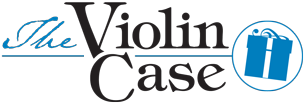Celebrate the Strings!
With Beautiful Gifts:
Popular Artists
Our Newsletter
- Home
- Free Resources
- String Articles
- April 2007
April 2007
Sensible Sight-Reading
Except from the "Audition Mastery Guide"by Adam Crane, Crane Classical Music Society
Do you know anyone who enjoys being "put on the spot," needing to perform a task, without the benefit of having preparation time, and at the same time is scored on the success of this event?
It is a human reaction to wish to avoid this feeling and to hurry through sight-reading in order to be done with this discomfort. In order to be as successful as possible, one needs to achieve the correct attitude towards the subject of sight-reading.
It is commonplace for the auditioning musician to be given upwards of 30 seconds to look over the music for sight-reading. Ever try to hold your breath for 30 seconds? When really thinking about it, 30 seconds is quite a long time. One must use this time intelligently, instead of being in a hurry to end the experience of sight-reading.
Here is a technique that has proven highly successful:
Becoming a Musician-Detective
Mission: Sight-Reading Success
All detectives need to find and process clues. One helpful thing is that all clues are right in front of you when you look at music needing to be played for sight-reading.
Here are the "Clue Categories"
- Key Signature
- Time Signature
- Dynamics
- Articulations
This allows one to jump further into the clues and to address what is most often what the audition panel is listening for.
First thing needed is to make sure that the rhythm for the excerpt is understood. The key needs to be understood in reference to which notes are affected by sharps or flats.
During the remaining 25 seconds, silently tap through the excerpt with your fingers on the fingerboard, with the goal of having accurate rhythm as the highest priority. Doing this in a relaxed and slow fashion will increase the sight reader’s success rate.
Believe it or not sight-reading can be fun, and is not just a matter of luck!
Just like preparation of music that you know, sight-reading can be practiced as well. The more it is practiced with the perspective of being a "Musical Detective," with the correct attitude, you will achieve success and comfort during the sight-reading experience.
Be a SIGHT-READING SLEUTH!
This article is an except from the "Audition Mastery Guide" by Adam Crane, violist, pedagogue and artistic director of the CraneClassical Music Society. This guide contains the following chapters: OUTLOOK AND ATTITUDE, THE ART OF SCALE,THE ESSENTIALS, SENSIBLE SIGHT-READING, VISUALIZATION AND IMAGERY, EXCEPTIONAL EXCERPTS,GETTING READY and ADDITIONAL ASSESSMENT GRIDS.
Trained in the old school conservatory atmosphere of Mannes College of Music, NYC Mr. Crane received his B.M. in both, Viola performance and Music Composition and went on to earn his M.M. and Post Graduate Professional Studies certificate from Mannes. His vast and varied music career range from concerto soloist, chamber musician, conductor, composer and artistic director of the Atlanta based CraneClassical Music Society. He has trained countless aspiring musicians to achieve their artistic goals for over 2 decades. In addition he is the creator of the Professional Music Educator's Mentor Network. More information about the "Audition Mastery Guide" and the Mentor Network can be found at www.craneclassical.com.

